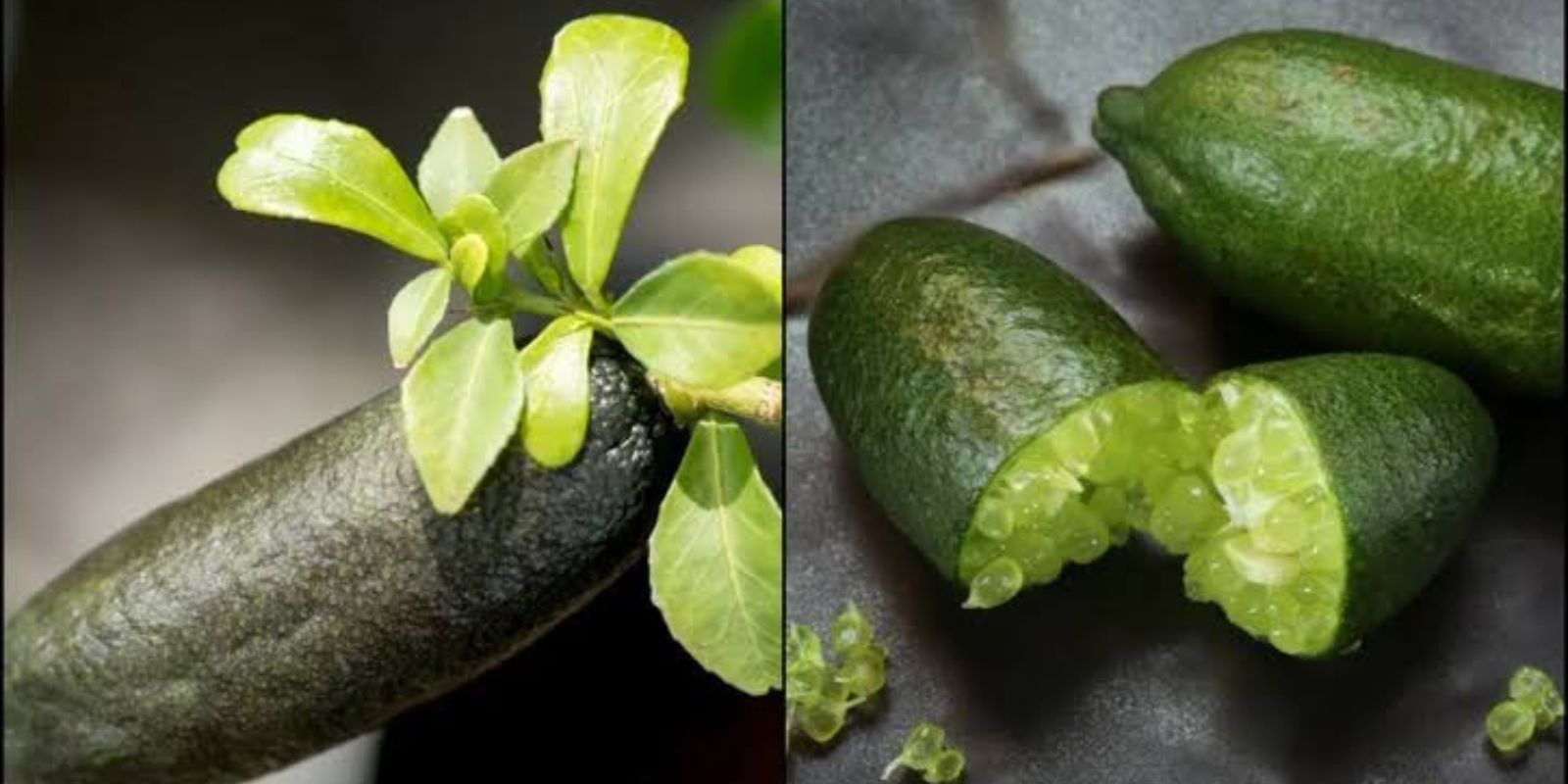Introduction
Finger lime trees (Citrus australasica), often called “caviar limes,” are a unique and exotic citrus variety native to Australia. These trees produce small, finger-shaped fruits with bead-like vesicles inside that pop with a burst of tangy, citrus flavor. Popular in gourmet cooking and cocktails, finger limes are surprisingly easy to grow at home, even in pots.
Whether you live in a small apartment or a region with cold winters, this guide will help you grow a healthy and productive finger lime tree in a container, allowing you to enjoy the beauty and benefits of this extraordinary fruit.
Why Grow Finger Lime Trees in Pots?
Growing finger lime trees in pots has several advantages:
- Portability: You can move the pot indoors during harsh winters or extreme weather.
- Space Efficiency: Perfect for small spaces like patios, balconies, or urban gardens.
- Control: Container gardening allows you to control soil quality, watering, and pest management easily.
With patience and the right care, you can enjoy homegrown finger limes regardless of your location.
Step-by-Step Guide to Growing Finger Lime Trees in Pots
1. Choose the Right Pot
- Size Matters: Select a pot that is at least 18–20 inches in diameter and depth. A larger pot allows the roots to spread and provides stability for the tree.
- Drainage: Ensure the pot has sufficient drainage holes to prevent waterlogging, which can lead to root rot.
2. Select the Right Soil
- Use a well-draining citrus-specific potting mix. If unavailable, create your own by combining:
- 1 part sand
- 1 part compost
- 1 part loamy soil
- Ensure the soil is slightly acidic (pH 5.5–6.5) for optimal growth.
3. Planting Your Finger Lime Tree
- Place a layer of gravel or broken pottery at the bottom of the pot to improve drainage.
- Position the sapling in the center of the pot.
- Fill the pot with soil, ensuring the roots are well-covered but the tree’s crown (where the trunk meets the roots) remains above the soil line.
4. Position and Sunlight
- Place the pot in a location that receives 6–8 hours of sunlight daily.
- If growing indoors, position the tree near a south-facing window or use full-spectrum grow lights to provide adequate light.
5. Watering
- Water the tree thoroughly when the top inch of soil feels dry.
- Avoid overwatering, as finger limes are sensitive to soggy soil. A consistent watering schedule is key.
6. Fertilization
- Feed your tree with a citrus-specific fertilizer every 6–8 weeks during the growing season (spring through early fall).
- Fertilizers high in nitrogen, potassium, and phosphorus will encourage healthy growth and fruit production.
7. Pruning and Maintenance
- Prune in late winter or early spring to maintain the tree’s shape and remove any dead or weak branches.
- Thin out excess fruit if the tree is overburdened to ensure larger, healthier finger limes.
8. Pest and Disease Management
- Common pests include aphids, spider mites, and scale insects. Treat infestations with neem oil or insecticidal soap.
- Prevent fungal diseases by avoiding overwatering and ensuring good airflow around the tree.
9. Temperature and Frost Protection
- Finger lime trees thrive in temperatures between 60°F–90°F (15°C–32°C).
- In colder climates, move the pot indoors or to a greenhouse during winter. Wrap the tree in frost cloth if outdoor temperatures drop below freezing.
10. Harvesting Finger Limes
- Finger limes typically start producing fruit after 2–3 years when grown from a young sapling.
- Harvest when the fruit is firm, plump, and slightly soft to the touch. Gently twist the fruit off the branch to avoid damaging the tree.
Caring for Your Finger Lime Tree Year-Round
Spring
- Fertilize regularly to encourage growth and flowering.
- Prune lightly to shape the tree and remove any deadwood.
Summer
- Water more frequently during hot weather, but avoid letting the soil stay soggy.
- Watch for pests and treat them promptly.
Fall
- Begin preparing the tree for cooler weather by reducing watering slightly.
- Move the pot to a sheltered location if frost is expected.
Winter
- Keep the tree indoors or in a greenhouse in colder climates.
- Reduce watering and avoid fertilizing during the dormant season.
Common Challenges and Solutions
- Yellowing Leaves:
- Cause: Overwatering, nutrient deficiency, or poor drainage.
- Solution: Check soil moisture, improve drainage, and apply a balanced fertilizer.
- No Flowers or Fruit:
- Cause: Insufficient sunlight or improper pruning.
- Solution: Ensure the tree receives enough sunlight and avoid heavy pruning during the growing season.
- Small or Deformed Fruit:
- Cause: Overcrowded fruit or lack of nutrients.
- Solution: Thin excess fruit and fertilize regularly.
Why Finger Limes Are Worth Growing
- Unique Flavor: The tangy, citrus “caviar” is a gourmet ingredient for desserts, drinks, and savory dishes.
- Ornamental Appeal: The tree’s glossy leaves and petite fruit make it a beautiful addition to any garden or indoor space.
- Compact Size: Ideal for container gardening, even in small spaces.
Conclusion
Growing finger lime trees in pots is a rewarding experience that allows you to enjoy an exotic and versatile fruit from the comfort of your home. With the right care, these trees will thrive in a container, producing fruit that adds a touch of luxury to your meals and drinks.
🌱 Have you tried growing finger limes? Share your experiences and tips in the comments! Let’s inspire each other to grow something extraordinary.

